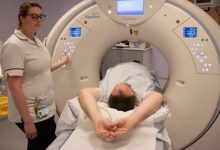Colleges that Offer Ged and Degree at the Same Time

Earning a GED is no small feat. Earning a bachelor’s degree is also no small feat. So earning both at the same time? That would be a pretty big deal! And yet, there are colleges that offer programs that allow you to earn a Bachelor’s degree and a GED simultaneously. Here are some of them:
Contents
Thomas Edison State University
Thomas Edison State University offers a GED and degree program that allows you to earn your high school diploma, associate’s degree, bachelor’s degree, master’s degree or doctorate at the same time. The university is one of the only two-year institutions in New Jersey that offer degrees with far less than two years of study. Tuition is affordable and designed for people who have been out of school for a while. They also offer accelerated programs so you can finish faster if you want to save money on tuition fees but not on time spent away from work.
Excelsior College
Here are a few other colleges that offer GED and degree at the same time:
-
Excelsior College (Online)
-
University of Alabama Online (GED-to-Degree program)
-
Duke University (GED to Bachelor’s Program)
Charter Oak State College
-
Charter Oak State College is a public institution located in Connecticut.
-
Charter Oak offers a Bachelor of Science degree in Criminal Justice and a Bachelor of Science degree in Psychology.
Washington State University Global Campus
Washington State University Global Campus is a public university that offers students GED and degree at the same time. The university is also known as WSU GK-12, Washington State University Global Campus or WSU Online.
WSU Global Campus was established in 2006, making it one of the first online universities in America. As of 2019, the university has over 30 degree programs available for both undergraduate and graduate degrees, including certification programs for professionals who want to advance their careers through education.
The school’s student body consists of over 20,000 students from all 50 states and 150 countries worldwide; about two thirds are undergrads while one third are postgraduates or professionals looking for career advancement (iSnare).
Related Post:Finance Bachelor’s Degree: Requirements, Tuition and Universities
College of Southern Idaho
CSI is a public community college located in Twin Falls, Idaho. It offers a variety of programs including the GED program and the Bachelor of Science in Nursing (BSN).
CSI’s online courses are taught by faculty from around the world who have experience teaching online.
Luzerne County Community College
Luzerne County Community College is a public, two-year, community college located in Nanticoke, Pennsylvania. The college was founded in 1966 and offers associate degrees, certificates and short-term professional development programs.
Here are some university options for people who want to simultaneously earn a GED and a Bachelor’s degree.
You might be wondering what it would look like to pursue a GED and bachelor’s degree at the same time. That’s a great question! Here are some university options for people who want to simultaneously earn a GED and a Bachelor’s degree.
Thomas Edison State University
Excelsior College
Charter Oak State College
Washington State University Global Campus
College of Southern Idaho
It’s possible that these schools have other programs besides their bachelor’s degrees, so you might want to do some research on them before making your final decision.
How to Study for GED
Know the format
As you prepare to take the GED, it’s important to know what you’re in for. The test has two parts: a Reasoning Through Language Arts and Literacy test that you take in English, and a Science, Social Studies, and Math test that you can take in either English or Spanish. The total time limit is 6 hours—you can choose how long each section takes—and each part has its own unique scoring system.
The RLA/Lit exam measures your knowledge of vocabulary, grammar (including punctuation), sentence structure and comprehension skills as well as your ability to read and understand written materials such as passages from literature or fiction genres like mysteries or science fiction novels. This section also includes some questions about finding information from texts using sources such as encyclopedias, dictionaries or charts/graphs/diagrams.
The Science exam tests your understanding of scientific concepts by asking questions based on short descriptions of experiments performed by scientists around the world over the past century or so; they expect students who have studied high school biology classes will be familiar with most topics covered here including photosynthesis vs cellular respiration vs fermentation processes; DNA replication; nuclear fusion & fission processes within stars etcetera…
Take practice tests and review problems you’ve gotten wrong.
Practice tests are the best way to prepare for the actual test. The more practice you have, the better.
There are several ways to take practice tests:
-
Online: You can take online practice tests at websites such as gedtestingservices.com, which provides dozens of free, full-length GED exams in English language arts (ELA) and math. This site also offers a paid option that allows you to take additional practice tests without ads or pop-ups for $9 per month or $99 per year.
-
With friends: If you’re taking the GED on your own and would like some company during your studies, consider finding another person interested in doing so as well! You could study together over Skype or text message while walking/driving/studying any place where phones aren’t allowed by parents/employers/etcetera – but be sure not go overboard with your studying time limits so everything stays fun! Make sure both people know their subject area really well before starting because it’s possible one person would end up teaching another one something new out loud in front of everyone else if not careful enough about covering all bases sufficiently beforehand.”
Start studying in advance.
You should start studying at least three months before the exam.
Start by reviewing your math classes, then move on to reading and writing. Reviewing math is important because it’s an area that most people need help in, so if you can nail down a solid understanding of the basics now, you’ll be in better shape when it comes time for the test. You should also make sure you review your reading and writing skills regularly (at least once a month) so that they don’t get rusty over time as well. If possible, try scheduling some time every week or two to work on these areas during evenings and weekends—the more often you study each skill set, the easier it’ll be for you later on!
Pick up any basic math you need to know by taking an intro class.
If you’ve never had to do math before, you might need to take a class or two to get up to speed on basic skills. You can usually find these sorts of classes at community colleges or adult education programs, and they’re often free. If your local school offers GED courses, it’s worth checking out what kind of support they offer for students who need help with math, from tutoring services that pair you with an instructor one-on-one all the way up through full-scale remedial classes in which you’ll learn from scratch everything from fractions and decimals to algebraic equations.
The most important thing is that when it comes time for your literacy exam (which is basically like taking the SAT), you won’t be surprised by questions about basic arithmetic—and even if you don’t pass the test right away, having taken some math classes will give you a leg up on retaking it later down the road when life gets less busy.
Get organized.
Get organized. Organization is key to success in learning and life, so it’s important that you create a study plan and stick to it. Your study plan should include:
-
A schedule of when you will study and review material
-
A list of topics or subjects that you need to learn
-
A list of resources (books, websites etc.) where you can find additional information about each topic
Use math flash cards and practice problems as much as possible to prepare for GED test math.
-
Use math flash cards to practice problem-solving skills.
-
Use practice problems to reinforce your knowledge of mathematical concepts.
-
Study with a study guide, tutor or study group in order to cover as many areas of GED math as possible.
-
Practice with a friend who can help you stay motivated and give you feedback on your progress.
Read books above your level to become a more confident reader.
Reading is a great way to practice your reading comprehension. Some ways to become a more confident reader include:
-
Read books above your level – try something that is a little more challenging than what you’re used to reading, maybe even just one chapter at a time. This will help you gain confidence in the book and make it easier to understand when learning for GED, since some of those questions are wordy or confusing!
-
Read longer works – try reading an entire novel instead of just short stories or articles from magazines or newspapers (unless they’re very complicated). This will help build up your stamina for longer texts and make them less intimidating when taking the GED test!
Study with friends or find a tutor to help you stay focused.
When you’re studying for the GED, it’s important to stay focused. A tutor can help with this. They’ll keep you on track and give you encouragement when you’re feeling down.
Tutoring is also a good idea if you don’t know how to study on your own, or if you want someone else to answer questions while they check that they’re being answered correctly.
It’s important not to get too stressed out about studying – try not to think about all the things that could go wrong! You can always retake the test if necessary (though it won’t be cheap). So just relax and enjoy yourself as much as possible!
To prepare for the GED Math test, reading is not enough. Be sure to get practice with the kinds of questions you will be seeing on the actual test
Reading is not enough. Be sure to get practice with the kinds of questions you will be seeing on the actual test. Practice problems are available on the GED Math test website, in GED Math Workbook, and in GED Math Flashcards.
Related Post:Associate Degree in Architecture: Requirements, Tuition and Universities
Conclusion: Colleges that Offer Ged and Degree at the Same Time
Overall, the process of earning a GED and a Bachelor’s degree simultaneously is achievable and rewarding. The hard work may be difficult at first, but it will pay off. It gives people more opportunities to advance in their career, as well as making them qualified for jobs that require a college degree.








